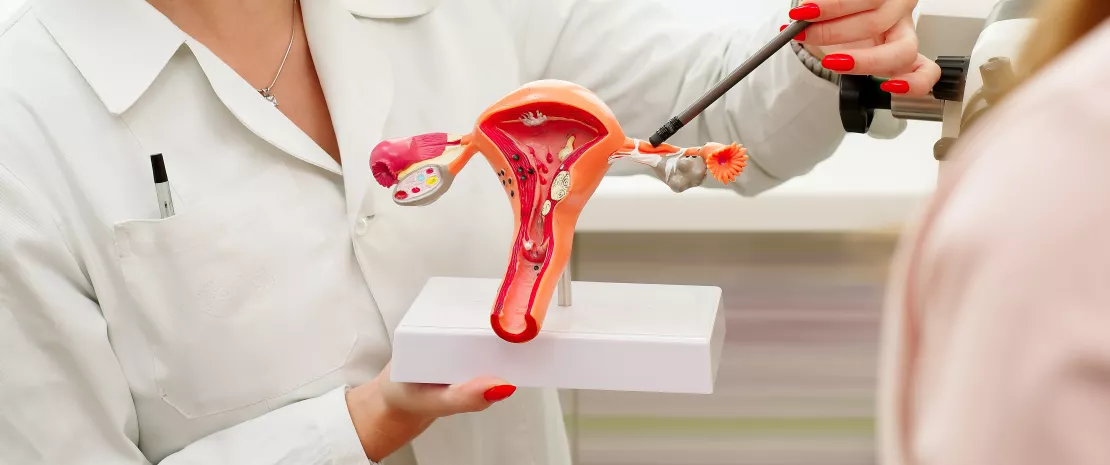When bacteria signal the presence of endometriosis
The oral, gut, and vaginal microbiota of women suffering from endometriosis display specific characteristics. Could this one day make it possible to diagnose endometriosis and assess its severity without the need for laparoscopy?
- Learn all about microbiota
- Microbiota and related conditions
- Act on your microbiota
- Publications
- About the Institute
Healthcare professionals section
Find here your dedicated section
Sources
This article is based on scientific information

About this article
L'endométriose, cette maladieEndometriosis is a condition where the endometrial tissue which usually lines the inside of the uterus instead grows outside the uterus. It affects around 10% of women of childbearing age. Unfortunately, one form of diagnosis – (sidenote: Laparoscopy Laparoscopy is a technique for exploring and treating organs in the abdominal cavity, usually performed under general anesthesia. Through small incisions in the abdominal wall, the surgeon can access the interior of the abdomen to diagnose (e.g. endometriosis) or treat (removal of endometriosis lesions, treatment of ectopic pregnancy, acute appendicitis, etc.). Explore DiZerega GS, Rodgers KE, Peritoneal Fluid. The Peritoneum. 1992. pp 26-56 Sprin… ) – is invasive and delays treatment, which, in the absence of a cure, is limited to reducing painful symptoms. The good news is that Australian researchers may have discovered a non-invasive alternative form of diagnosis. 1
10% Endometriosis affects roughly 10% (190 million) of reproductive age women and girls globally. ²
Can the microbiota signal endometriosis?
The researchers looked at three microbiomes: oral, gut, and vaginal. Their aim? To identify a bacterial signature of endometriosis. And they succeeded! The healthy controls had a more diverse oral and gut (but not vaginal) microbiota than women suffering from endometriosis. More importantly, changes in certain bacteria were observed in women suffering from endometriosis.
For example, their vaginal flora contained more Escherichia, Enterococcus, and Tepidimonas. Their gut microbiota was richer in Lactobacillus and Phascolarctobacterium, bacteria already found in the patients’ (sidenote: Peritoneal fluid Fluid found in the peritoneal cavity, i.e., inside the membrane surrounding the abdominal organs. It acts as a lubricant, preventing friction between the organs during digestion. DiZerega GS, Rodgers KE, Peritoneal Fluid. The Peritoneum. 1992. pp 26-56 Springer New York ) , suggesting these bacteria may migrate from the digestive tract to the peritoneum. In the oral microbiota, (sidenote: Fusobacterium Fusobacterium is a genus of filamentous bacteria that lives in the mouth (dental plaque), digestive system, vagina and, to a lesser extent, the uterine cavity. This pathogenic bacterium is implicated in periodontitis (inflammation at the base of the tooth) and colorectal cancer. ) was more prevalent in women with moderate to severe endometriosis. This bacterium is implicated in periodontitis, an inflammation of the gums that often affects women suffering from endometriosis. Could Fusobacterium thus be the link between endometriosis and gingivitis? Perhaps.
The vaginal microbiota
Endometriosis and its severity
The researchers also found differences according to the severity of endometriosis. For example, Actinomyces was more abundant in the digestive tract in minimal/mild endometriosis, while Paraprevotellaceae was associated with more severe forms. In the oral microbiota, Cardiobacterium was more prevalent in mild forms of endometriosis and Fusobacterium in severe forms. In the vaginal microbiota, severe endometriosis was associated with an increased presence of Blautia, Dorea, Collinsella, and Eubacterium.
This study is clearly only a first step, with further research on larger groups required to confirm these findings. But who knows? They may one day lead to a non-invasive screening test for endometriosis and its severity based directly on our bacteria.















